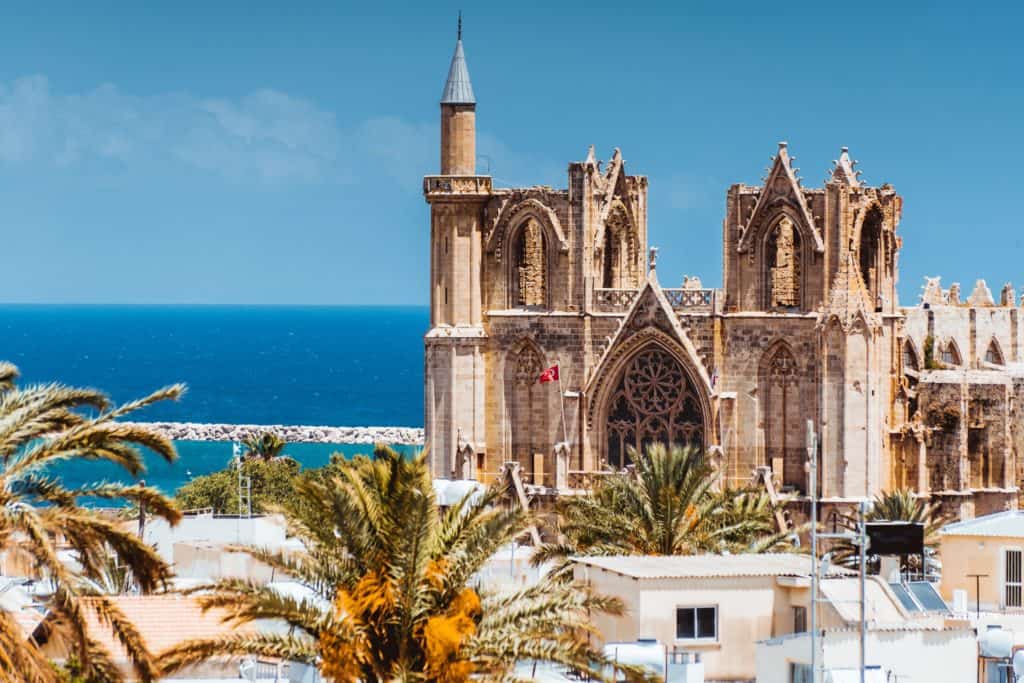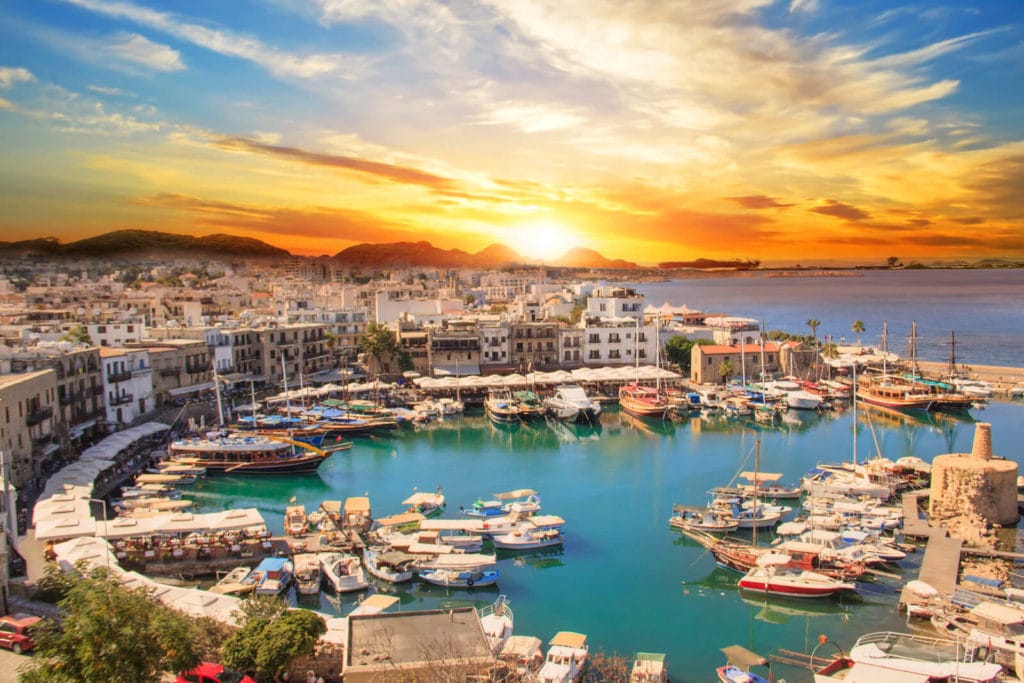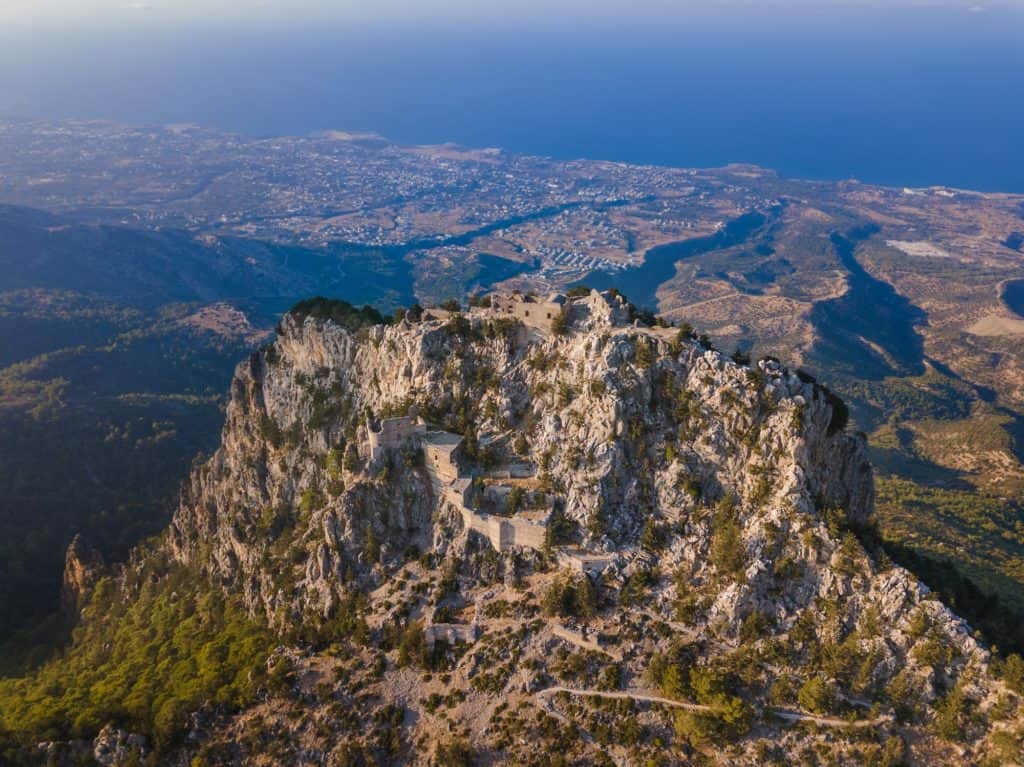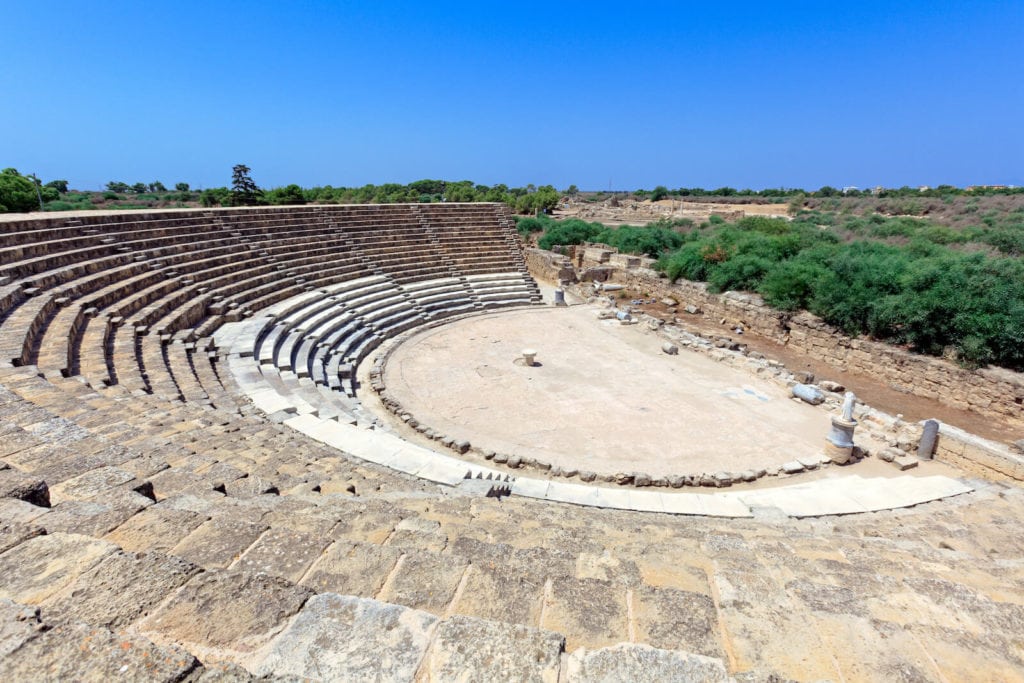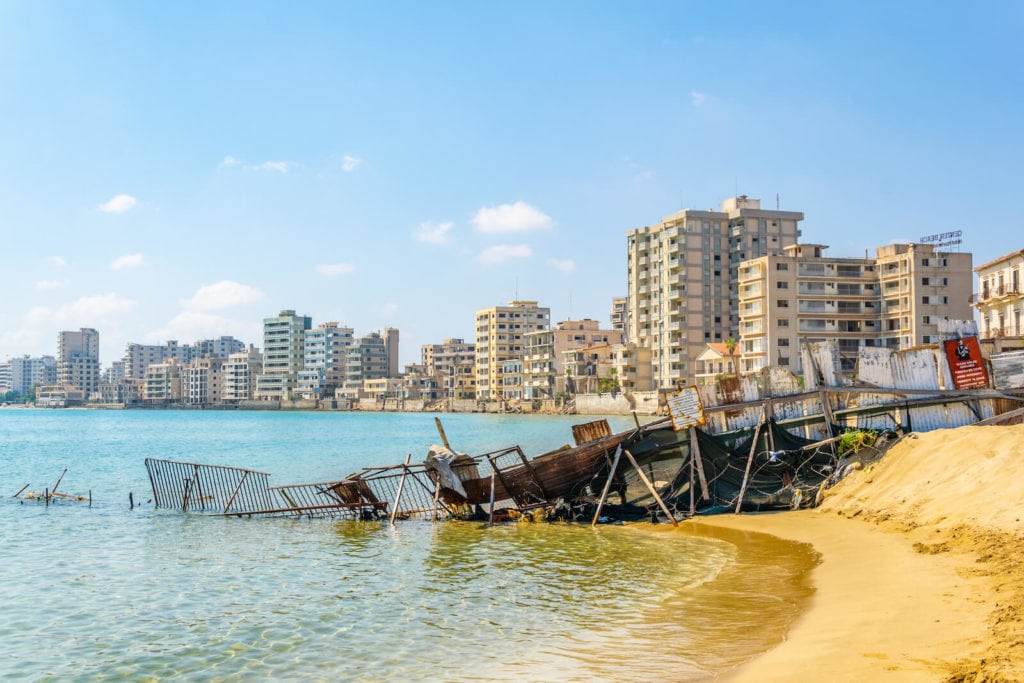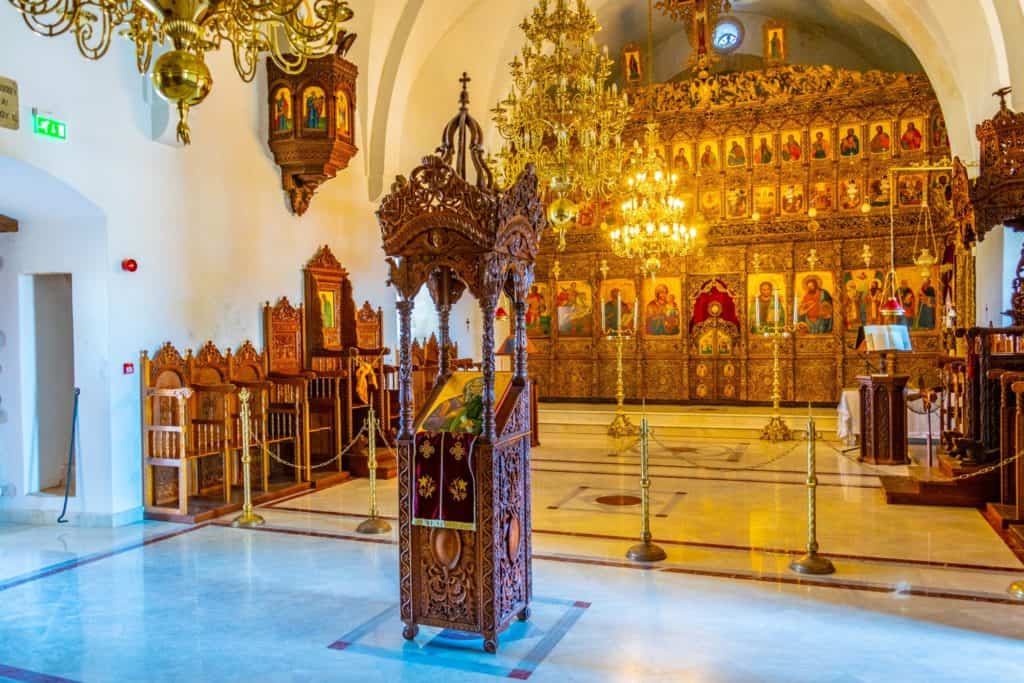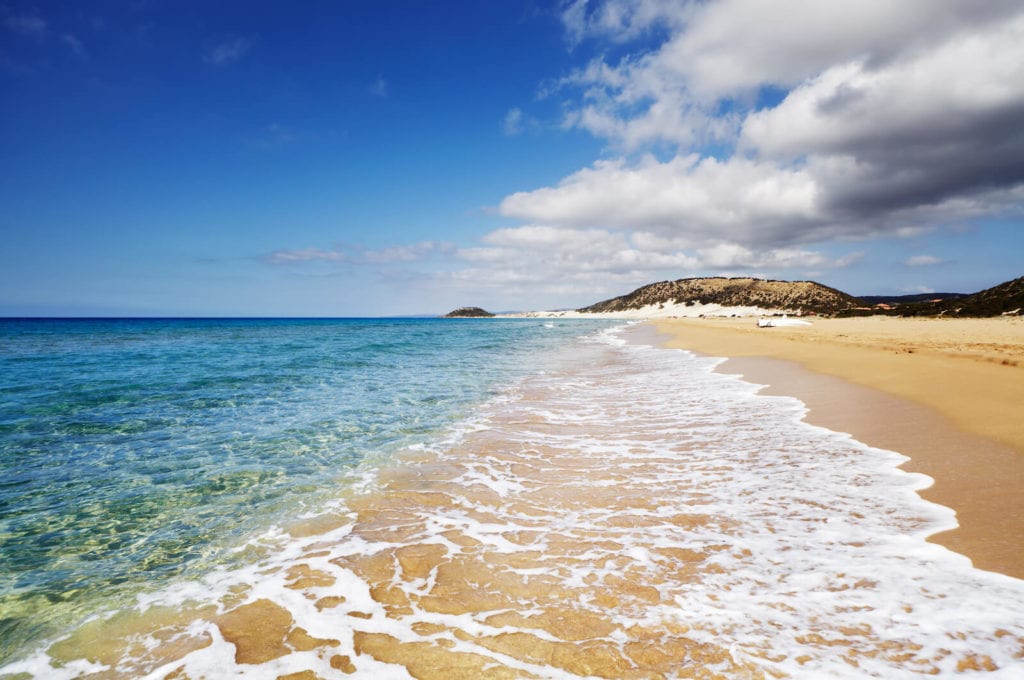Northern Cyprus may not have a particularly large area, but it still has some wonderful sights to offer. In this article you will find our top 10 and other tips!
Quick overview
- St. Hilarion Castle: One of the best-preserved castles in Cyprus, perched on a hill and offering breathtaking views of the surrounding area.
- Bellapais Monastery: A magnificent 13th century monastery known for its stunning architecture and beautiful location surrounded by olive groves.
- Famagusta: A historic city with well-preserved medieval fortress walls and many fascinating ancient ruins.
- Kyrenia harbor: A beautiful harbor surrounded by old ships and restaurants serving fresh fish and seafood.
- Kantara Castle: A castle perched on a hill in the north-east of Cyprus, offering breathtaking views of the surrounding area.
- Buffavento Castle: An impressive 12th century castle perched on a high peak with breathtaking views of the surrounding mountains and the sea.
- Salamis: An ancient city known for its well-preserved Roman ruins and mosaics.
- Ghost town Varosha: Varosha is an abandoned town near Famagusta on the east coast of Northern Cyprus. It was once a thriving and popular tourist destination, known for its luxurious hotels and miles of sandy beaches.
- Apostolos Andreas Monastery: An Orthodox monastery located on a picturesque peninsula in the north-east of Cyprus, known for its beautiful location and architecture.
- Golden Beach & Karpaz National Park: A beautiful national park and beach with clear water and fine sand, which is one of the best beaches in Northern Cyprus.
Let's go into the details!
1. St. Hilarion Castle
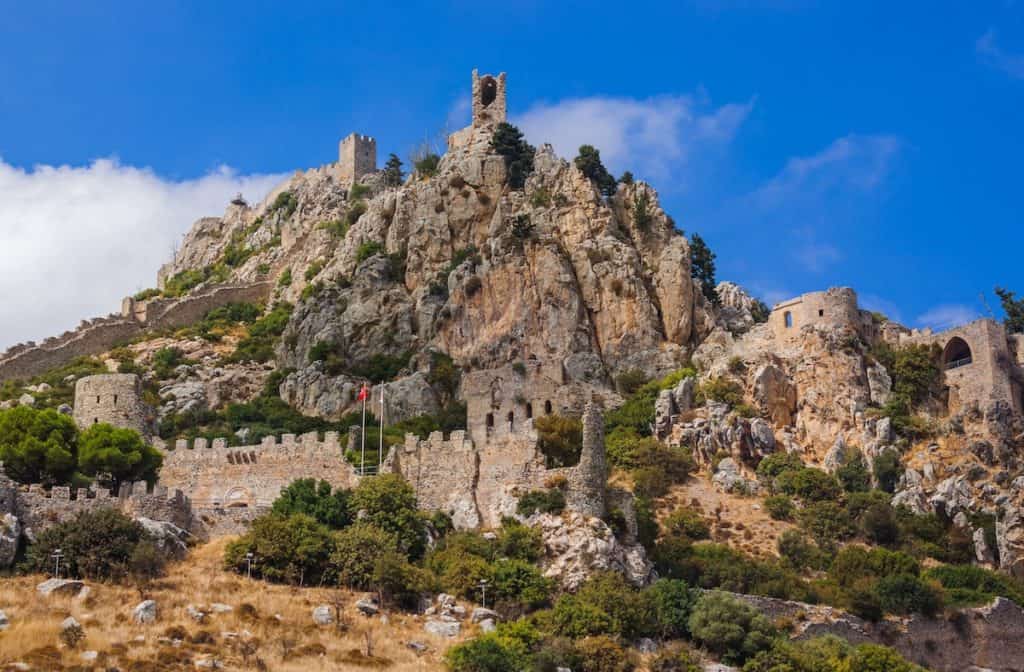
The castle is located on a high hill in the Kyrenia Mountains, about 10 km from Kyrenia. It is one of the most famous sights in Northern Cyprus and was built in the 10th century during Byzantine rule. Over the centuries, it has been extended and rebuilt by various rulers, including the Crusaders and the Venetians.
The castle is named after St. Hilarion, a hermit monk from the 4th century who lived in a cave on the hill. The castle consists of three main parts: the Lower Castle, the Middle Castle and the Upper Castle. Each part has its own defenses, watchtowers and living quarters.
Visitors can climb through the narrow corridors and stairs of the castle and enjoy the magnificent view of the surrounding valley and the sea. It is also possible to see some of the original defenses, such as the embrasures, the walls and the watchtowers.
St. Hilarion Castle is an important part of Cypriot culture and history and is visited by many tourists every year.
2. Bellapais Monastery
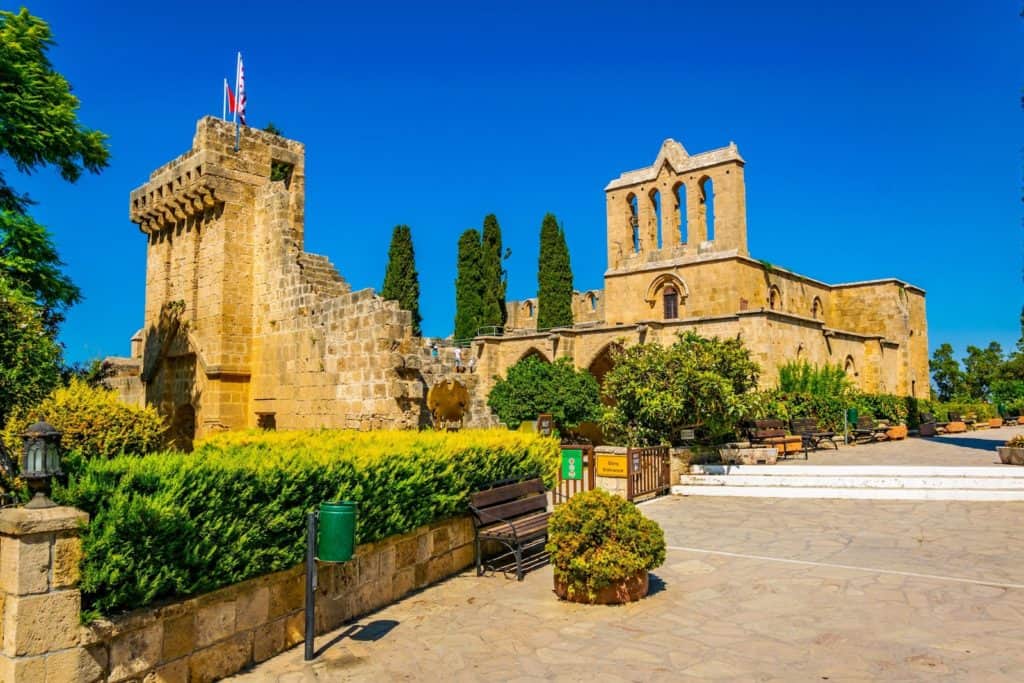
The Bellapais Monastery (in Turkish: Beylerbeyi) is a historic monastery from the 13th century and is located near Kyrenia in the north of Cyprus. The monastery was founded by French monks of the Cistercian order and has since become an important symbol of Cypriot culture.
Bellapais Monastery is known for its stunning architecture, its well-preserved cloisters and its beautiful location surrounded by olive groves. The monastery’s buildings were built in the Gothic style and are an excellent example of medieval architecture in Cyprus. The complex also includes a large cloister, a church and a refectory.
The monastery was once an important center of education and cultural life in Cyprus and was home to many important scholars and artists. Today, it is a popular destination for tourists who want to discover the island’s rich history and culture. Visitors can walk through the ruins of the monastery, visit the exhibitions and enjoy the breathtaking views of the sea and the surrounding olive groves.
Every year, Bellapais Monastery hosts a famous music festival that attracts many international artists. The festival is an important part of the cultural scene in Cyprus and offers visitors the opportunity to experience live music in a unique and historic setting.
Bellapais Monastery is a place of great historical and cultural importance that will delight visitors with its beauty and rich history.
3. Famagusta
Famagusta (Turkish: Gazimağusa) is a historic city in the east of Northern Cyprus and was once an important trading town in the eastern Mediterranean. The city is known for its well-preserved medieval fortress walls and its many fascinating ancient ruins.
The fortress walls of Famagusta are one of the city’s most important landmarks. They were built in the 14th century by the Lusignans and have been well preserved to this day. The walls are over 5 km long and enclose the old town of Famagusta as well as the port and the suburbs.
There are many historical buildings and ruins to discover in the city, including the Gothic St. Nicholas Cathedral, which was built in the 14th century and is now a ruin. The ruins of the medieval city walls are also impressive and offer visitors an insight into the turbulent history of the region.
Another highlight in Famagusta is the ancient city of Salamis, which is located just a few kilometers outside the city. Salamis was an important port city in ancient Cyprus and is known for its well-preserved Roman ruins, including the theater, the gymnasium and the thermal baths. The Roman mosaics and statues are also impressive and give visitors an insight into life in ancient Cyprus.
Visitors can stroll through the streets of Famagusta, explore the ruins and admire the fortress walls that surround the city.
4. Kyrenia Port
Kyrenia Port (also known as Girne Port in Turkish) is one of the most famous places in the north of Cyprus and a popular tourist destination. The port is located on the north coast of the island and is surrounded by a picturesque old town.
The port was used as an important trading port in ancient times and was also an important base during the Crusader era. Today, the harbor is a popular place for tourists and locals alike and offers a variety of restaurants, bars and stores.
The area around the harbor is very picturesque and offers a wonderful view of the clear waters of the Mediterranean and the surrounding mountains. Many visitors enjoy strolling along the promenade and watching life in the harbor. The harbor is also an important starting point for boat tours and water sports activities such as diving, snorkeling and parasailing.
There are many historical buildings and sights to discover in the harbor itself, including the old fortress at the western end of the harbor, which was built by the Venetians in the 16th century. The fortress now houses a museum that provides an insight into the history of the region.
The combination of historical sights, picturesque surroundings and lively hustle and bustle makes the port an unforgettable experience.
5. Kantara Castle
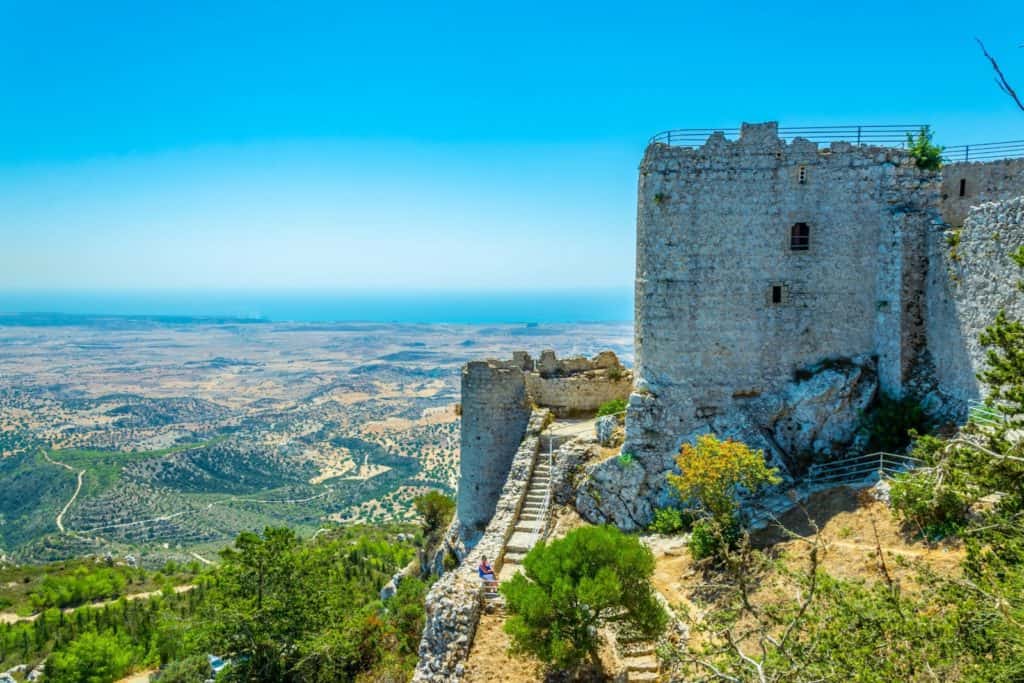
Kantara Castle is a medieval castle perched on a hilltop near Famagusta in the north-east of Cyprus. The name “Kantara” comes from the Arabic and means “bridge”, which refers to the strategic location of the castle, which served as a link between the coast and the hinterland.
The castle was built by the Byzantines in the 10th century and was an important defensive structure against the Arab conquerors. Over the centuries, the castle was extended and rebuilt by various rulers, including the Crusaders and the Venetians.
The castle is known for its strategic location and its breathtaking views of the surrounding area. Visitors can walk to the top of the castle and enjoy panoramic views of the sea and the mountains. The castle walls, towers and watchtowers are still well preserved and offer visitors an insight into life in the Middle Ages.
Legend has it that the castle was visited by Richard the Lionheart when he was on his way to the Holy War in the Holy Land. It is also said that he stopped off at the castle and was impressed by the beauty of the surroundings and the castle walls.
6. Buffavento Castle
Buffavento Castle (also known as Büyük Kule in Turkish) is an impressive medieval castle perched on a high peak in the Kyrenia Mountains in northern Cyprus. The name “Buffavento” means “wind of the north” and refers to the exposed location of the castle, which is exposed to strong winds.
The castle was built by the Byzantines in the 11th century and was an important point of defense against the Arab conquerors. Over the centuries, the castle was extended and rebuilt by various rulers, including the Crusaders and the Venetians.
Buffavento Castle is known for its breathtaking location and panoramic views of the surrounding area. Visitors can climb the steep steps and explore the well-preserved walls, towers and watchtowers. From the top of the castle, there is a spectacular view of the surrounding mountains and the sea.
The castle has survived many attacks and sieges over the centuries and has been destroyed and rebuilt several times. Legend has it that the castle’s name comes from an English crusader who was captured during an attack on the castle and was forced to take the name “Buffavento”, which refers to the strong winds that surround the castle.
7. Salamis
Salamis is an ancient city on the east coast of northern Cyprus and was once an important port city in the eastern Mediterranean. The city was founded by the Greeks around 1100 BC and was later an important city under the Romans and Byzantines.
The city is known for its well-preserved Roman ruins and mosaics. Visitors can walk through the remains of the ancient city and admire the remains of the Roman theater, the gymnasium and the thermal baths. The ruins of the Roman forum and the market square are also impressive and offer visitors an insight into life in ancient Cyprus.
One of the most famous highlights of Salamis are the Roman mosaics found in the town’s houses and public buildings. The mosaics are well preserved and depict various mythological scenes and animal motifs. They are an important part of the cultural heritage of Northern Cyprus and attract many visitors every year.
Salamis was also known for its thermal baths, which were used by the Romans. These were lined with hot springs and marble and have been well preserved to this day. The baths are a popular place for visitors who want to relax and experience ancient Roman life.
The well-preserved Roman ruins, mosaics and baths give visitors an insight into life in ancient Cyprus and the culture of the Roman era.
8. Ghost town Varosha
In the 1960s and 1970s, Varosha was a hotspot for celebrities and tourists from all over the world.
However, the situation changed in 1974 when Turkey occupied the north of Cyprus and the island was divided politically. As a result of these events, Varosha became a buffer zone between the Republic of Cyprus and the Turkish Republic of Northern Cyprus. The inhabitants were forced to leave their homes and the town was declared a restricted area.
Since then, Varosha has been a ghost town and remains inaccessible to the public. The buildings have fallen into disrepair and nature has taken its course, with trees and plants permeating the once bustling streets and squares. Varosha is a symbol of the ongoing political conflict on the island and attracts photographers and historians from a safe distance who wish to document the history of this fascinating town.
Bicycles or e-scooters can be hired at the entrance to the city.
8. Apostolos Andreas Monastery
The Apostolos Andreas Monastery is a monastery in the northeast of Cyprus and one of the holiest places on the island. The monastery is located in a picturesque bay on the Karpass peninsula, surrounded by a wild and unspoiled landscape.
The monastery was built by the Byzantines in the 15th century and is dedicated to St. Andrew, one of the twelve apostles of Jesus Christ. The monastery consists of a church, a chapel and several residential buildings for monks.
The Apostolos Andreas Monastery is an important pilgrimage site for locals and Orthodox Christians and attracts many visitors every year. The atmosphere in the monastery is very spiritual and peaceful, making it an ideal place for meditation and tranquillity.
The area surrounding the monastery is also very beautiful and offers magnificent views of the sea and the surrounding mountains. Visitors can stroll through the monastery’s gardens, admire the flowers and herbs and enjoy the calming sound of the sea.
There are also some fascinating ancient sights to discover near the monastery, including the ancient monastery of Ayia Triada and the ancient ruins of Karpasia.
10. Golden Beach & Karpaz National Park
Golden Beach (in Turkish: Altınkum) is a beautiful beach in the northeast of Northern Cyprus, known for its golden sand and clear waters. The beach is a popular destination for tourists and locals alike and offers a variety of activities and amenities.
The beach is around three kilometers long and offers plenty of space for sun worshippers and water sports enthusiasts. The area surrounding the beach is very picturesque and offers a magnificent view of the sea and the surrounding mountains. There are also many cafés and restaurants along the coast where you can refresh and relax after a day at the beach.
Golden Beach is also known for its cleanliness and safety and has been awarded the “Blue Flag”, an international seal of quality for clean and safe beaches.
One of the special features of the beach is that it is an important nesting site for sea turtles, especially the endangered loggerhead turtles. The beach is monitored by volunteers and environmentalists to ensure that the turtles are protected.
